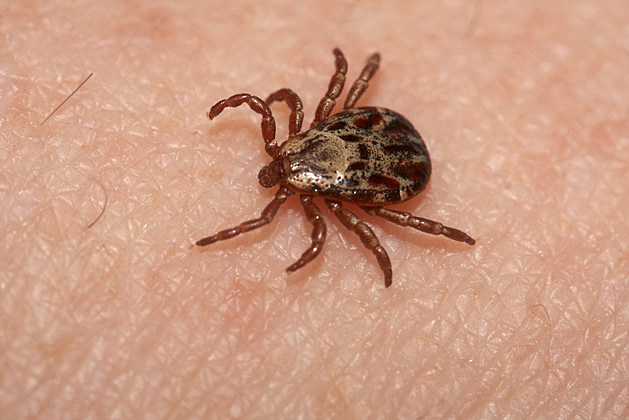

In order to spread disease to a human or animal, first a tick needs to be infected with the pathogen and it needs to be attached and feeding for a certain amount of time. They are relatively slow feeders and will usually feed for 3-5 days at a time.
#WOOD TICK VS DEER TICK SKIN#
Host immunity and grooming activity may affect mortality.īlacklegged Deer ticks feed on blood by inserting their mouth parts into the skin of a host animal such as a mouse, dog, bird, or even human. Due to their low probability of finding a host, starvation is a major mortality factor of ticks. Density-independent factors causing tick mortality include a range of adverse climatic and microclimate conditions, which can influence temperature and humidity and have the greatest impact on tick survival. Tick death is caused by density-dependent factors such as parasites, pathogens, and predators, all of which appear to have little impact on tick populations. Beginning in May, engorged adult females typically lay between 1000 to 3000 eggs on the forest floor at the site where they detached from their hosts. Adult female ticks feed for five to seven days while the male tick feeds only sparingly, if at all.Īdult ticks feed on large mammals, primarily upon white-tailed deer ( Odocoileus virginianus). In a similar manner, engorged nymphs detach and drop to the forest floor where they molt into the adult stage, which becomes active in October.Īdult ticks remain active through the winter on days when the ground and ambient temperatures are above freezing.

In May, larvae molt into nymphs, which feed on a number of hosts for three to four days. Peak larval activity occurs in August, when larvae attach and feed on a wide range of mammals and birds, primarily on white-footed mice ( Peromyscus leucopus).Īfter feeding for three to five days, engorged larvae drop from the host to the ground where they overwinter. In June and July, eggs deposited earlier in the spring hatch into tiny six-legged larvae.
#WOOD TICK VS DEER TICK PROFESSIONAL#
Remember, if you find a tick on a loved one, your pet or yourself consult a medical professional immediately.Ixodes scapularis is a three-host tick each mobile stage feeds on a different host animal.


Consult your vet for medication to ward off ticks or if you have concerns about possible bites. Make sure to check for ticks at the end of the day or whenever you come inside after a few hours. Long clothing and insect repellent can prevent ticks from taking up residence on your body, but these pests can easily attach to your clothing, too. They're not like spiders, flies or mosquitoes, which usually cause a tingling sensation on your skin letting you know something's not right. If a tick lands on you, it's likely you won't feel it. Long-sleeve shirts with pants or long socks are encouraged any time of the year. Regardless of the type of tick, the same strategies can be used for protection. It’s important to seek prompt medical attention if you exhibit these symptoms, especially if you suspect they’re in conjunction with a bite of any kind. Both ticks can also transmit other serious diseases. Wood ticks are the primary vector of Rocky Mountain spotted fever, which can bring symptoms such as fever, spotty rash (two to five days after fever), nausea and body aches. Primary symptoms are a bull's-eye rash on the skin, along with flu-like symptoms, including fever and aches. Deer ticks are the primary vectors of Lyme disease, a nasty disease that can cause severe health issues.


 0 kommentar(er)
0 kommentar(er)
